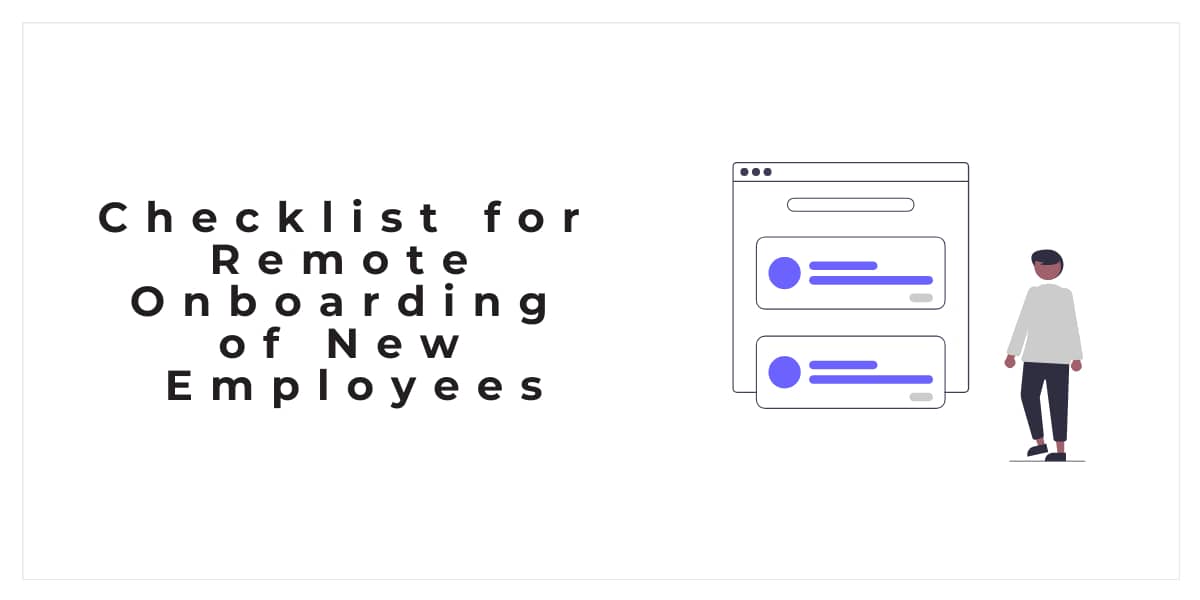Today it's normal for workers in a distant workplace to feel overburdened and alone. They find it challenging to interact with their peers, and they discover themselves becoming swamped by information. Having diverse geographical locations and time zones could make things tougher. Thus, it is essential to remember some pertinent key factors to overcome these challenges. With the best onboarding software, you can cover some of the gaps and keep your virtual employees from becoming disorganized or disengaged. The following advantages are provided by a comprehensive remote onboarding checklist:
- simplifies the hiring procedure
- eliminates ambiguities & provides a clear path for the coming days
- helps remote workers establish stronger connections
- boosts productivity and workplace satisfaction
Pre-Onboarding
Performing the pre-onboarding procedures a week or two before the employee's first day will help you get off to a successful start. Making sure your new hires have a seamless first day and are less worried about what to expect is a critical step. An essential item on the checklist is scheduling a video conference call for an individual or team orientation and discussing your organization’s objectives and principles. Send a digital version of your employee manual and all other necessary onboarding documentation, as well as the agenda of the meeting, in advance. Give your new employee a mentor and an onboarding buddy, and ask them to arrange a video conference schedule. To make the onboarding process smoother and more efficient, many companies are turning to technology. There are several software solutions available that can help automate and streamline the onboarding process. For example, some HR software allows managers to create customized checklists and workflows for new hires, and to track their progress through the onboarding process. Other software includes features like virtual meeting scheduling and document management, making it easy for new hires to access the information they need.
First Week of Remote Onboarding
To avoid overloading new hires, plan a few simple sessions. It ought to be focused on becoming acquainted with the company, wrapping up training, outlining the job role, and addressing questions. Furthermore, Ensure that prospective hires have enough time to evaluate internal online sources, videos, and manuals. Hold a communication introduction with IT where new employees are provided with resources, and credentials, are included in important chat forums, access to email, and open time to assist them to become acquainted with any updated software they'll be utilizing. Hold a team orientation and give new employees connections to all of the team's documents, an organizational chart, relevant contact details, team schedules, and anything else that the team consistently uses.
Personalized Onboarding Experience
Remote workers look forward to having specific goals and the chance to meet face to face with their supervisor. As a result, you may simplify the onboarding process by offering your employees a customized onboarding experience based on the user's job & expertise. The introductory pop-ups and task schedules can be customized to meet your training needs with the aid of onboarding software. To better understand content consumption and gain useful information for improving remote onboarding, you can further target behavioral parameters.
Ongoing Support for a Smooth Transition
Remote onboarding is an ongoing process and doesn’t end after the first week of your new hires’ start date. Look for ways to provide continued training & support with a prolonged employee onboarding period to assure their performance in their new surroundings. Make a distinct communication channel and check in with them frequently as it is crucial. The challenge of remote onboarding also includes remote training. Try to use the best remote work software, as you will get rid of unnecessary technical issues and have instant software assistance if needed. Additionally, setting up ongoing product training and microlearning opportunities to assist new employees is a critical component of the checklist
Improve your Onboarding Process with Employee Feedback
Positive employee feedback helps you to assess the quality of your remote employees. It will maintain interaction during the remote onboarding process and assist you in bridging gaps going forward. Remote workers will be able to tell you exactly where you can make improvements for your upcoming cohort of new hires if you actively encourage input throughout the onboarding process. Additionally, developing a personalized 30-60-90-day induction plan with video check-ins and milestones will enable you to determine whether or not remote workers have adjusted to their roles. This will enable you to refine your strategy in light of their suggestions and needs.
Bottom Line
Today, over half of the employees report that something went awry during onboarding, whether it was an absence of the required software, a lack of a background of the company, skipping peer introduction, or something else altogether. To ensure the success of your new hires and to prevent them from feeling alone, disconnected from the team, or in need of any support, use this checklist for remote employee onboarding. Maintain their transition with tools like this software, which streamlines formal mentoring, employee resource groups, and DEI programs to keep them engaged. This will help you create a strong and dynamic relationship with your employees by appropriately involving your organizational goals alongside offering flexibility, resources, and open communication.








